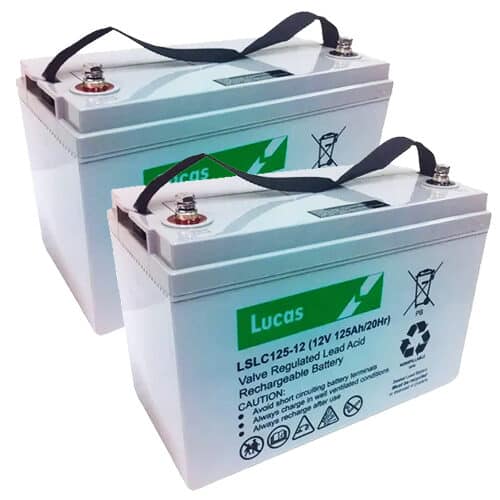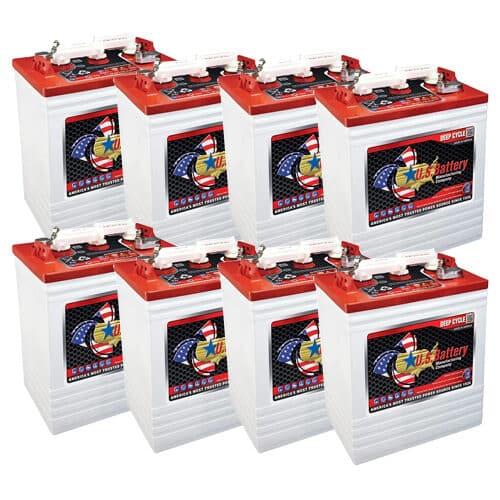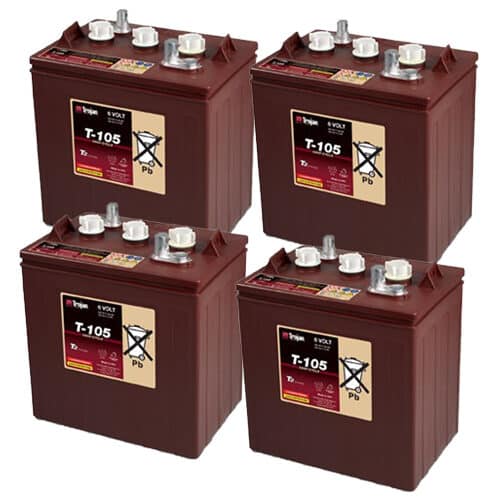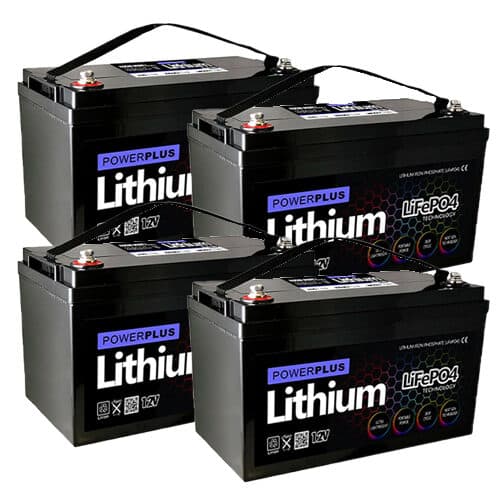
Off Grid Batteries
WET FLOODED
-
BEST FOR BUDGET
-
GOOD FOR LARGE BACKUP SYSTEMS
-
LARGE RANGE OF BATTERIES
AGM
-
REASONABLY PRICED
-
GOOD FOR GARDEN ROOMS
-
LARGE RANGE OF BATTERIES
LITHIUM
-
LIGHTWEIGHT
-
FOR OFF GRID SYSTEMS IN HOMES
-
CAN PERFORM MANY CYCLES
We supply 3 different types of off grid batteries, lithium, AGM & wet flooded battery types. We explain the pros and cons of these batteries below. Choosing the correct battery types for your off grid setup will depend on budget, usage and other factors. Off grid systems usually use 6 -12 batteries in a bank. We supply 6 volt, 8 volt & 12 volt type batteries.
Green Energy
Installing battery storage reduces your reliance on the electrical grid, and decreases the required money you have to put in your energy supplier’s pocket.
You can support your electrical system for hours with a reliable solar power battery storage system.

You need batteries to store the energy that is generated from your solar panels for example. Solar panels generate energy from the sun which is then passed to the charge controller and this is then fed to the batteries. Your system will then feed your property or equipment from the batteries.
As explained above, you have a choice of 3 different battery types. AGM, lithium or wet flooded batteries. Each of these types have their pros and cons but they will all run off grid systems providing you charge them correctly and use the correct amount of batteries for your energy needs.
It’s also important to note that when buying batteries, for example wet flooded types, they can only be drained to 50% of their capacity. So remember this when working out how many ampere hours you will need.
Unfortunately, the answer to this question is not straightforward sadly. Every solar and battery setup is different, and it’s important to take into account your unique energy usage.
You can calculate your daily electricity usage in Watt-hours by identifying the wattage ratings of the appliances and how many hours you intend to run them each day. For example, a single 50 Watt fan operating for 3 hours per day will result in 150 Wh per day (50W x 3 hours = 150Wh).
The average off-grid home usually requires about 8 Kw (or 8000 Watts) of power to rely entirely on its own energy production.
In a typical off grid application, you would have a 24 or 48-volt battery bank which is somewhere in the range of 400 to 800 amp hour. They can go as high as 6,000 amp hour or more in larger systems.
*It’s also important to note that when buying batteries, for example wet flooded types, they can only be drained to 50% of their capacity. So remember this when working out how many ampere hours you will need*













